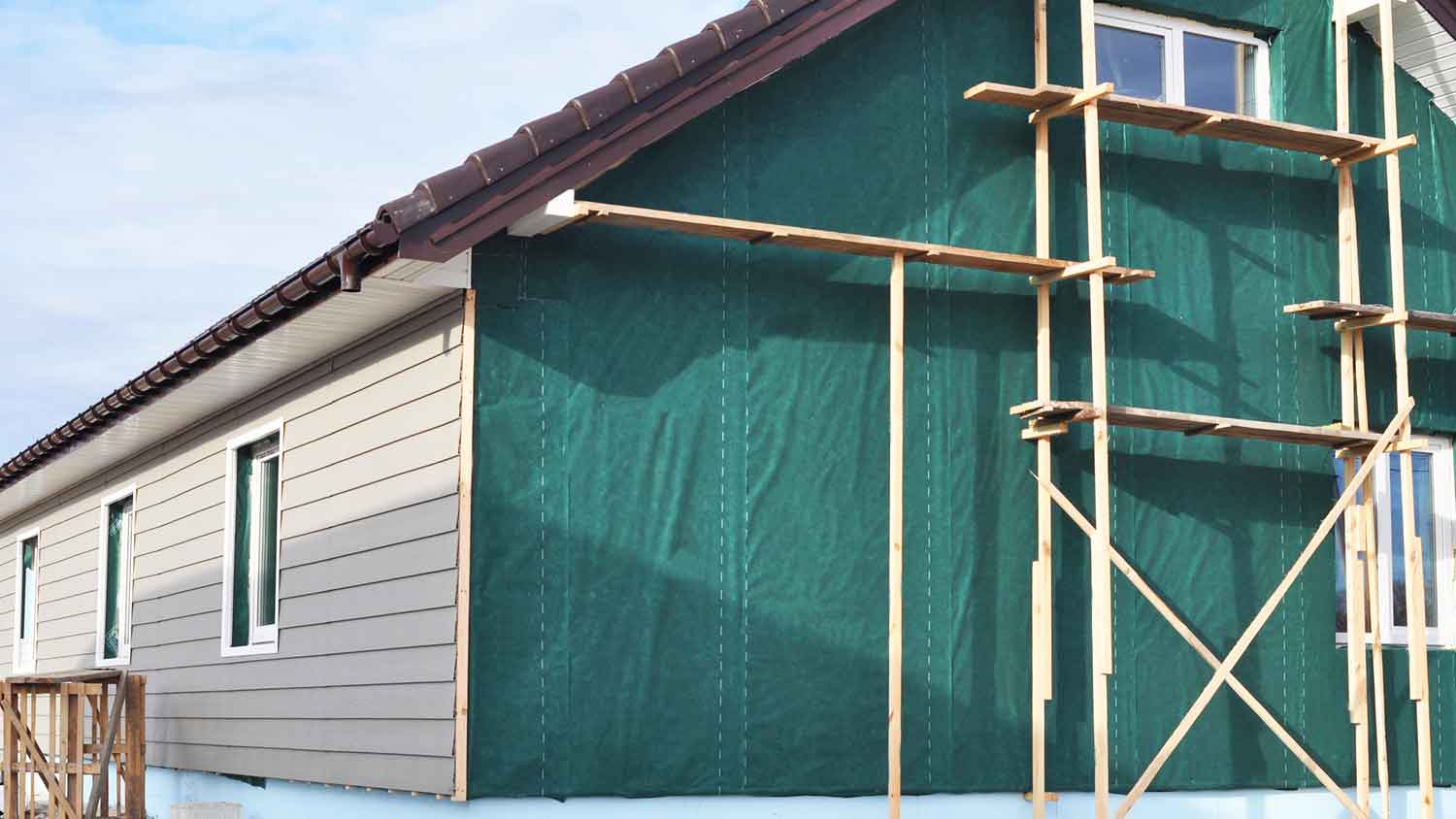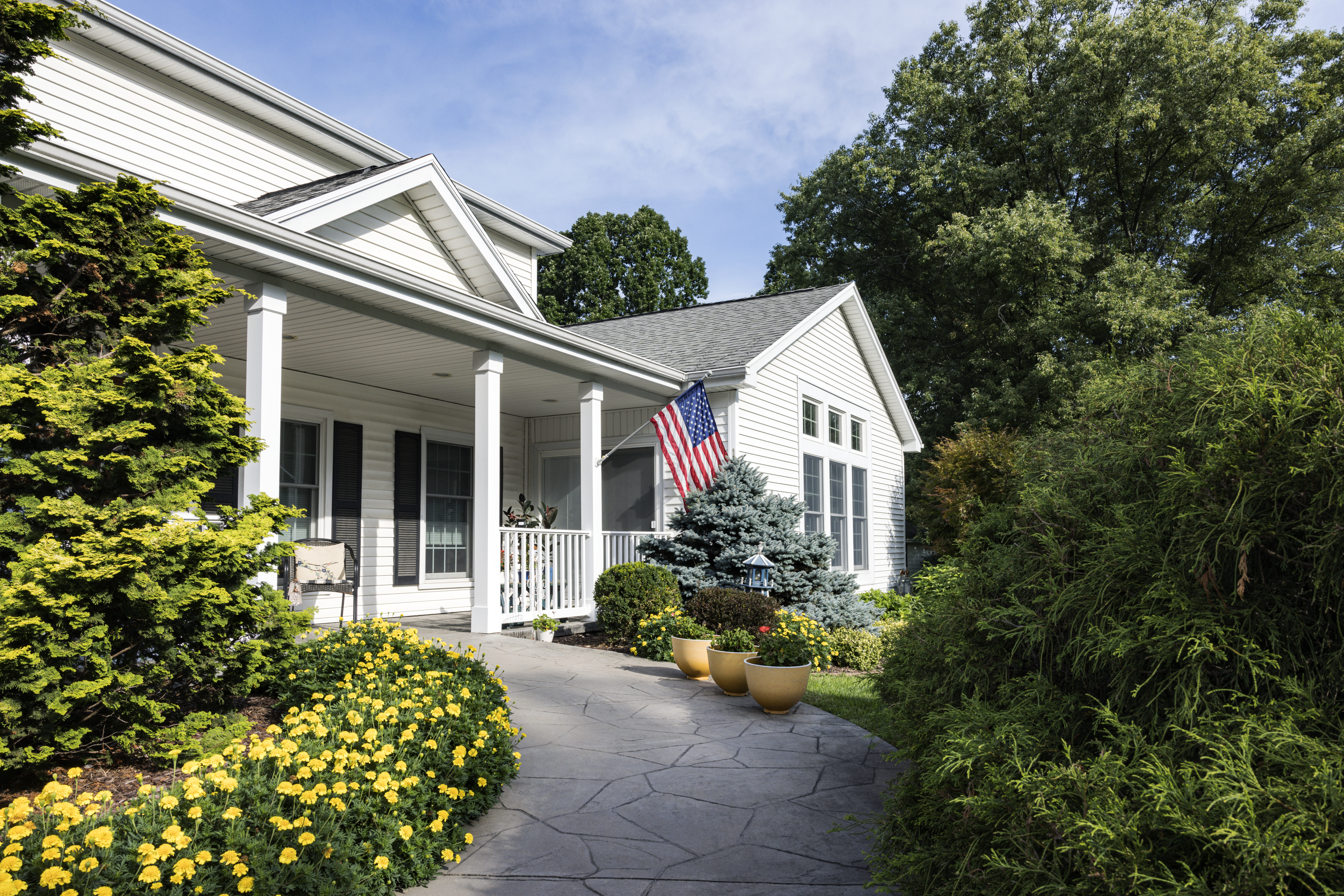
Siding repairs offer much-needed protection against New York's heavy snowfall and harsh winters. Learn about siding repair costs in New York.
Time is not on your side when it comes to a house without siding


House wrap may be left exposed to the elements without siding for 30 to 180 days, depending on the type of house wrap and weather conditions.
Exposure to UV rays, rain, and dirt can cause house wrap to deteriorate and compromise its moisture protection.
Choose a house wrap with high UV resistance if you anticipate leaving your house without siding for an extended period of time.
While it would be nice if all house construction and improvement projects stayed on schedule, delays can lead to scenarios like a house sitting without siding for longer than intended. After 30 to 180 days of exposure to the elements, UV rays will compromise the house wrap and reduce its moisture protection. We break down reasons a house may sit without siding, factors that affect how long you can leave a house without siding, and the risks of delaying siding installation.
Construction delays are, unfortunately, a common occurrence that can throw off your intended schedule. Leaving a house with house wrap but without siding isn’t an ideal situation, but it’s an unavoidable one from time to time. Reasons a house may sit without siding include:
Delays waiting for materials or trying to locate discontinued siding
Waiting on a permit to install siding to be approved
Supply chain delays
Labor shortages
Bad weather

While you can’t always choose the best time of year to install siding to schedule your siding installation or replacement, the weather your home is exposed to before the siding is installed can significantly affect how long you can wait. Your house will be exposed to UV rays no matter the weather, but hot, sunny days may cause the house wrap to degrade faster. Extreme cold, wind, rain, or snow can also add to the urgency of installing siding as quickly as possible.
House wrap is a water-resistant barrier made of synthetic materials that protects your house from moisture intrusion and is installed over the exterior of the house and underneath the siding. Different brands and types of house wrap can be exposed to the elements for different amounts of time—the manufacturer will have a guide to how long the wrap can offer UV protection.
Adding the cost of a house wrap with higher UV protection into your cost to replace siding or installing new siding can offer more peace of mind in the case of unexpected delays.
The longer a house sits without siding and is exposed to UV rays, the more compromised the house wrap will become. Risks of compromised house wrap include:
Reduced moisture protection
Higher chance of mold growth and rot
Energy loss
Compromised structural integrity
To avoid damage to your home’s exterior and an increased risk of mold and rot, hire a siding contractor who can complete the project in a timely manner without leaving your home exposed to the elements. A local siding pro can work with you or your general contractor to minimize delays and ensure your home stays protected. Finding a pro who installs siding in your area will help you determine the best time to install siding and to time the project right to reduce the risk of extended exposure.
They reinstalled my reverse osmosis system, including changing the filters. They came the same day I spoke with them, and did the job Lee. I couldnâ  t be happier with the job they did. A little on the expensive side, but worth it. I would highly recommend them.
Exceptional quality of work, customer satisfaction oriented. I wanted to do interior work and was so impressed I asked for shingle roof and siding work on my home also, which came out very great. Any questions and concerns, Galaxy contractor answered my questions. Thank you guys.
We are so please that we chose Right Away Construction for our siding. The team was great. Project took from start to finish 9 days in all and we could not be happier. Our final inspection praised the work Right Away Construction did. We have received so many great compliments from our...
We purchased a home that was need of a bit of work and I had great difficulty finding good firms that charged fair prices and performed well. I first hired JMZ to clean the yard and cut the grass. I saw Jose's truck in the area and called the number on the side. In the past two years Jose and...
Professional, courteous and great quality. Would hire the team again.
went very well i'm not that wordy price was on the high side while I would probably use them again I might try a less expensive alternative if time permits
From average costs to expert advice, get all the answers you need to get your job done.

Siding repairs offer much-needed protection against New York's heavy snowfall and harsh winters. Learn about siding repair costs in New York.

Vinyl siding can give your home a fresh look and feel. Learn how much vinyl siding installation costs in NYC based on factors like home size and siding type.

New siding in New York improves a home's aesthetic and provides important insulation and protection against snowfall and rain. Learn about average siding replacement costs throughout New York.

Keeping your cedar siding in good shape helps it last for decades. Learn what cedar siding maintenance steps to take and when to take them.

When installing siding, you may find rotted boards underneath the old siding. Siding is your home’s first line of defense against the elements–rot causes damage that can spread, so learn about what to do when you discover rotted boards.

Want to learn how to install vinyl siding on a house? Keep reading for insight into the whole process from start to finish.